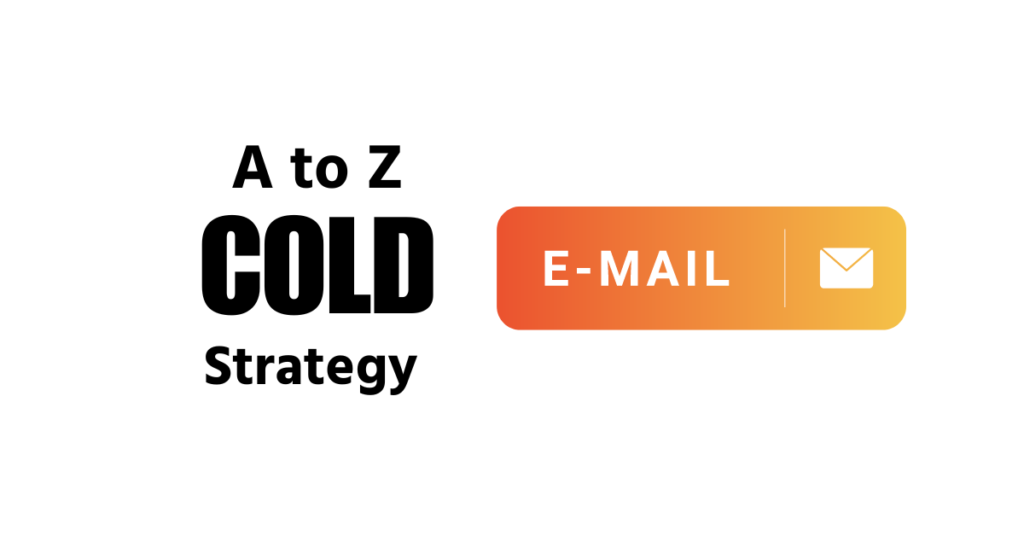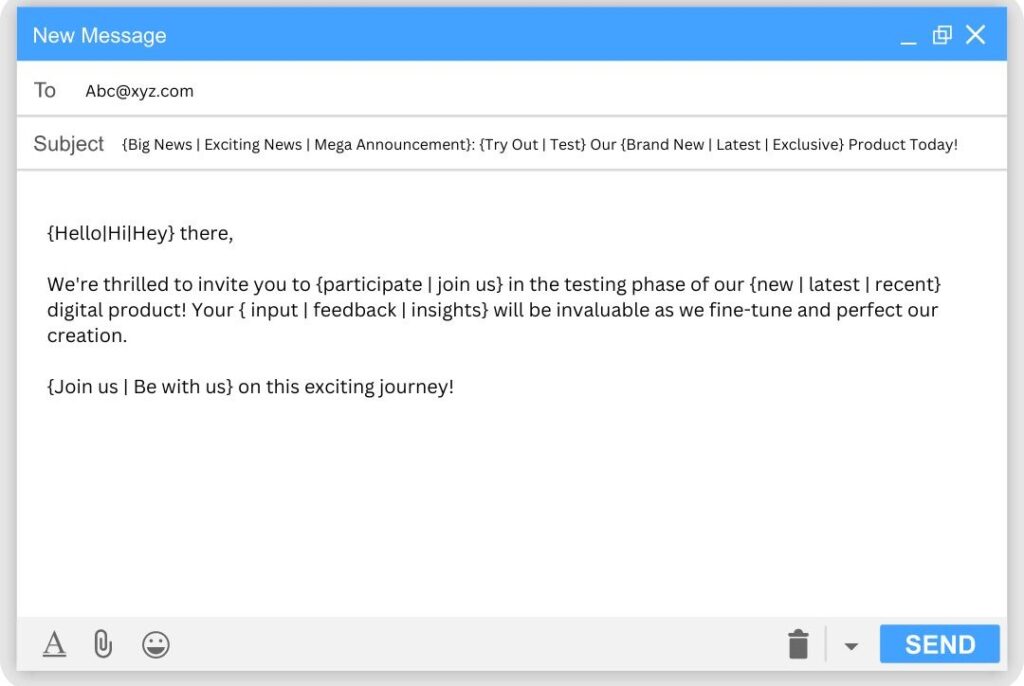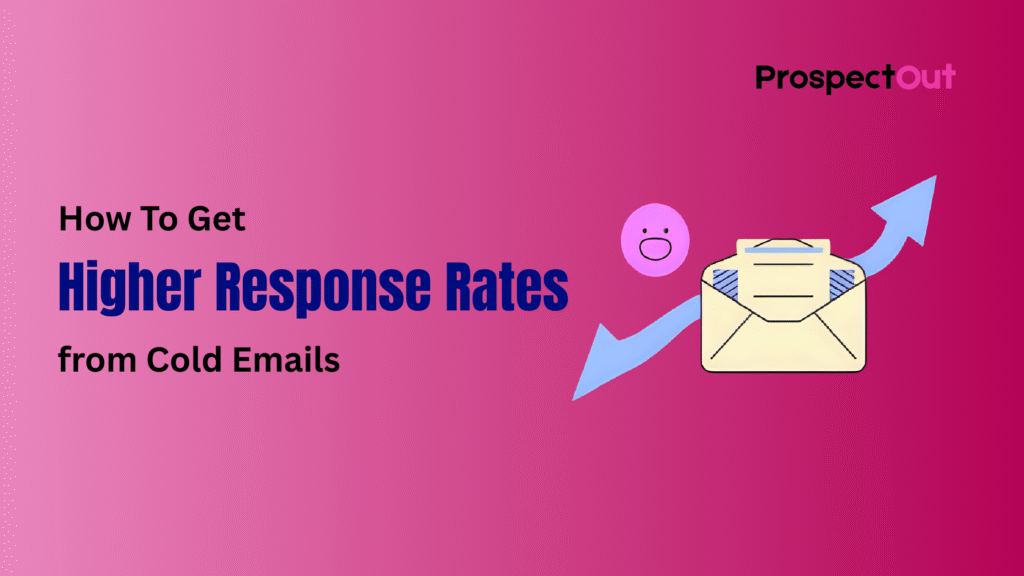
Cold emailing feels like an uphill battle sometimes, right? You send out a bunch of emails, and the silence is deafening. You wait for those Higher Response Rates from Cold Emails that never come. I get it.
But here’s the good news: getting more responses from your cold email campaigns isn’t some mysterious dark art. It boils down to a few smart tweaks and strategies that actually work. And the best part? You don’t have to be a copywriting ninja or spend hours crafting each email.
So, grab your coffee, and let’s walk through how to boost your cold email response rates, with some real tips, tricks, and offer ideas that have been proven to get replies.
Why Are Your Response Rates So Low? Let’s Break It Down
Before jumping into the fixes, let’s figure out why your emails might be ignored. It’s not just you, average cold email reply rates hover around 1% to 5%, depending on the industry and how you do things.
Here’s what usually kills replies:
- Your list isn’t targeted or clean. If you’re sending emails to people who have zero reason to care, why would they respond?
- Your subject lines are boring or generic, no one clicks on “Hello from XYZ.”
- The email body is lengthy, unclear, or filled with jargon. People skim emails, so if it looks like a wall of text, you’re toast.
- You have no clear call-to-action (CTA). If you don’t tell people what to do next, they won’t take any action.
- Your email may not even reach the inbox due to poor deliverability.
Fixing these areas makes a huge difference.
Quick Checklist: 6 Things to Fix Before Rewriting Your Email
Alright, before you get fancy with your writing, check this list:
- Clean and segment your list
Don’t blast everyone. Target decision-makers by role, company size, or industry. The more relevant, the better. - Verify email addresses
No bounces! Use tools like Hunter or Snov.io to avoid dead emails. - Warm up your sending domain & set SPF/DKIM/DMARC
This tech ensures your email actually lands in inboxes instead of spam. - Plan your cadence with 2–4 follow-ups
People don’t reply to one email. Follow-ups are your friend, but don’t overdo it. - Have one simple CTA
“Reply to this email” or “Are you free for a 10-min chat?” Keep it’s easy to say yes to. - Personalize smartly
Go beyond just “Hi {{Name}}.” Mention something specific to their role, company, or recent event.
Tricks to get Higher Response Rates from Cold Emails
Subject Lines That Actually Get Opens
Subject lines are your first impression. If they don’t grab attention, your email dies unread. Here are four types that work well:
- Curiosity:
- “Quick question about {{Company}}’s onboarding”
- “Quick question about {{Company}}’s onboarding”
- Simple ask:
- “Are you the right person to discuss X?”
- “Are you the right person to discuss X?”
- Stat-based:
- “Increase {{Metric}} by 18% quick idea”
- “Increase {{Metric}} by 18% quick idea”
- Personalized:
- “Congrats on {{Recent Event}}, {{FirstName}} quick note”
- “Congrats on {{Recent Event}}, {{FirstName}} quick note”
Also, don’t forget the preview text (the snippet that shows next to the subject). Make it a mini-hook to encourage clicks.
Writing Body Copy That Gets Replies (No Jargon, Just Real Talk)
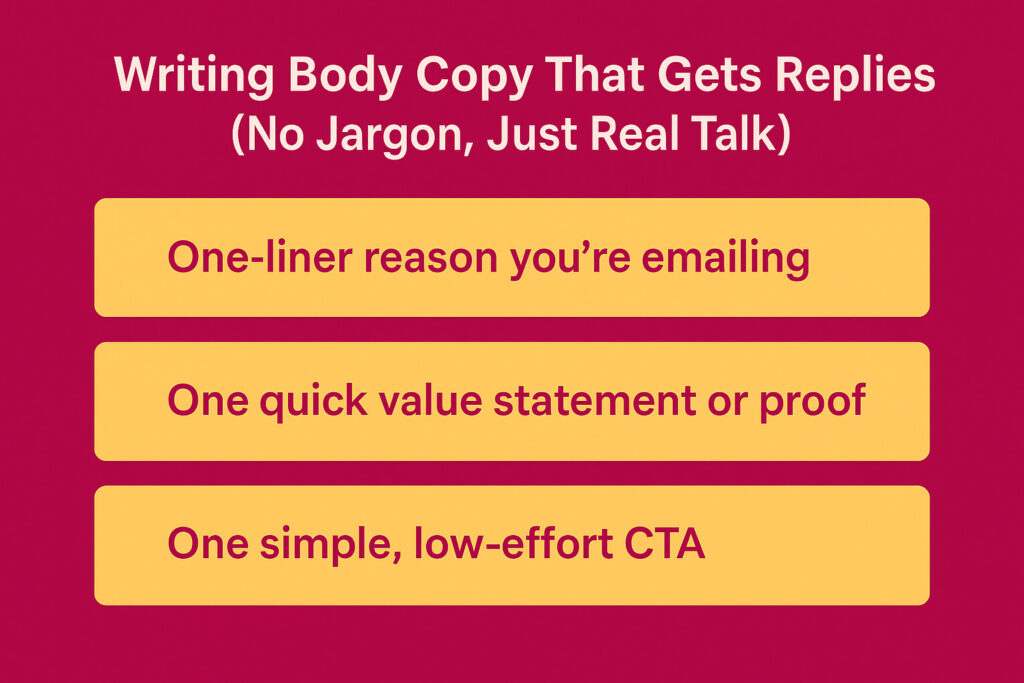
Imagine you’re writing to a busy person who gets hundreds of emails a day. They don’t want to read an essay.
Here’s the formula that works:
- One-liner reason you’re emailing
- One quick value statement or proof
- One simple, low-effort CTA
For example:
Hey Maya,
I noticed {{Company}} just launched X. We helped [peer company] reduce onboarding time by 28% in 6 weeks.
Quick 10-minute call to share how we did it?
This kind of email is:
- Easy to read (short paragraphs, no fluff)
- Attractive (shows real benefit, not hype)
- Social proof included (mentioning peers builds trust)
- Timely (refers to a recent event or trigger)
This matches a behavioural psychology model called EAST. Easy, Attractive, Social, Timely which means your email should tick these boxes to get a reply.
Offers That Actually Get Replies (Yes, You Need One)
Here’s where most people mess up. Your email shouldn’t be a generic “Do you want to book a demo?”
Instead, offer a low-friction, specific proposal that feels valuable and easy to accept.
What makes a good offer?
- Takes less than 10 minutes of their time
- Has clear, measurable value
- Is relevant to their role or pain point
- Feels exclusive or limited
- Costs them nothing to accept
12 Tested Offer Ideas You Can Swipe
- Free 10-minute teardown of a public page or flow
“Quick 10-min teardown of your signup flow, no strings attached. Interested?” - 1-page micro-audit based on public data
“I ran a 1-page audit of your pricing page. 3 quick wins inside. Want it?” - Competitive benchmark report
“Want to see how your conversion stacks up against competitors X, Y, and Z?” - Custom ROI calculator for their company
“I made a 60-second ROI calculator for {{Company}}. Can I send it over?” - Limited beta invite
“Offering 5 free beta seats for teams improving onboarding want in?” - Exclusive case study of a peer company
“How we helped [SimilarCompany] cut churn 14%. Want the quick 1-pager?” - Free checklist or template
“We have a hiring checklist that sped up interviews. Want a copy?” - Short, recorded demo tailored to them (1–3 minutes)
“I recorded a 90-second walkthrough showing 1 idea for {{Company}}. Want the link?” - Intro to a mutual connection
“Can introduce you to X who solved Y.. interested?” - Free 7-day trial with onboarding help
“Try our tool free for 7 days, and we’ll cover your first 30 minutes of setup.” - Money-back guarantee on a small outcome
“If we don’t show a 10% lift in 30 days, we’ll give you a free month.” - Micro-commitment question
“Would you prefer A) a quick call, B) a PDF report, or C) no thanks?”
Each of these offers lowers the barrier to reply because they sound helpful, easy, and tailored.
Follow-Up Sequences That Don’t Annoy
Remember: most replies happen after the first follow-up or two. Don’t give up too soon, but also don’t spam.
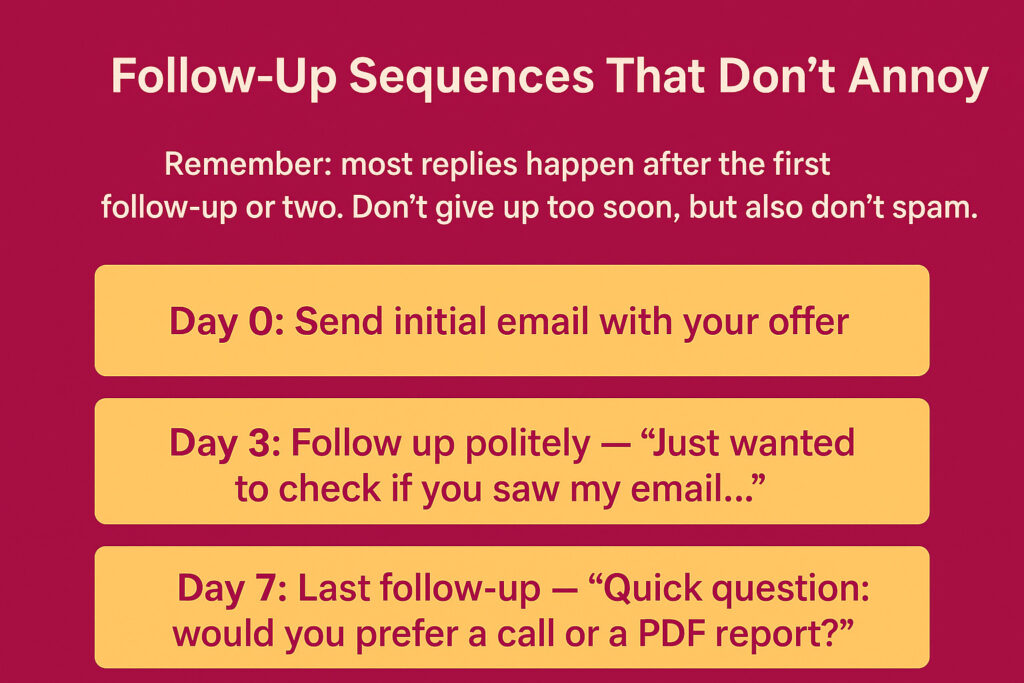
A simple sequence:
- Day 0: Send initial email with your offer
- Day 3: Follow up politely — “Just wanted to check if you saw my email…”
- Day 7: Last follow-up — “Quick question: would you prefer a call or a PDF report?”
Adding a LinkedIn connection request or comment in between emails can help, too. It builds familiarity.
Quick A/B Testing Plan to Know What Works
Don’t guess what your prospects like, test a/b it.
- Split 10% of your list to try 2 different subject lines
- Next, try 2 versions of your offer or CTA on another 10%
- Track reply rates and positive responses (not just opens)
- Pick winners and roll out to the rest
Keep tests small, simple, and iterate often.
Deliverability Tips You Can’t Ignore
Your email might be great, but if it lands in spam, it’s pointless.
Make sure you:
- Set up SPF, DKIM, and DMARC for your domain
- Warm up new sending domains slowly over 30 days (start with 50 emails/day and increase)
- Verify your list to avoid bounces
- Throttle your sending speed (don’t blast 10,000 emails in one hour)
- Monitor complaint and bounce rates
Following these steps ensures that your emails are seen by real humans.
Three Templates You Can Copy Today
1. Micro-Audit Outreach
Subject: 3 quick wins on {{Company}}’s pricing page
Hey {{FirstName}},
I put together a 1-page audit of your pricing page — found 3 quick wins that could lift conversions. Can I send it over?
Cheers,
[Your Name]
2. Quick ROI Calculator
Subject: Quick ROI calc for {{Company}}
Hi {{FirstName}},
I made a quick ROI calculator customized for {{Company}} that shows potential savings. Want me to send it your way?
Best,
[Your Name]
3. Short Demo Offer
Subject: 90-second idea for {{Company}}
Hey {{FirstName}},
I recorded a quick 90-second demo showcasing one idea that could help {{Company}} improve onboarding. Want the link?
Thanks,
[Your Name]
Wrapping It Up
To get more replies from your cold emails, focus on:
- Cleaning and targeting your list, your message only matters if it reaches the right ears.
- Crafting a clear, personal email with one low-friction offer makes saying yes easy.
- Following up smartly and testing subject lines and offers. Keep iterating for better results.
Try these tactics, and you’ll see your inbox get a little less lonely, promise.
If you’d like, I can share a checklist or additional templates to help you get started quickly. Just ask!

